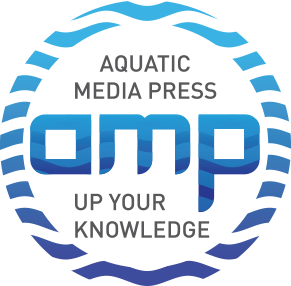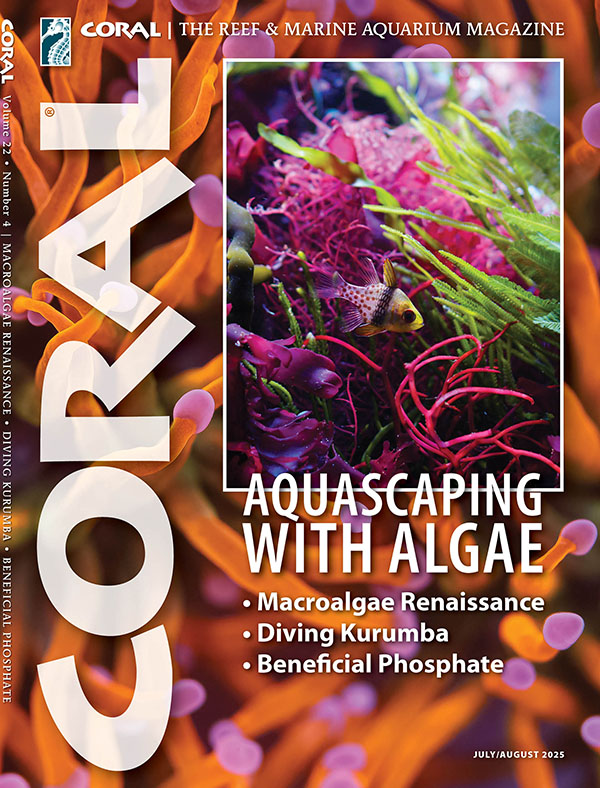
CORAL Magazine Issue Review: AQUASCAPING WITH ALGAE – Volume 22, Issue 4. July/August 2025
by Toygar Niron
founder of the Turkish-language marine aquarium website N Akvarium
The main theme of the CORAL Magazine July / August 2025 issue, AQUASCAPING WITH ALGAE, is macroalgae, which meets the reader after a preparation process of approximately 18 months! This special issue is not just a magazine with over 100 pages; it is a treasure trove of information. With new discoveries, tutorials, “how-to” sections, and much more, it will attract the attention of everyone who is passionate about the hobby.
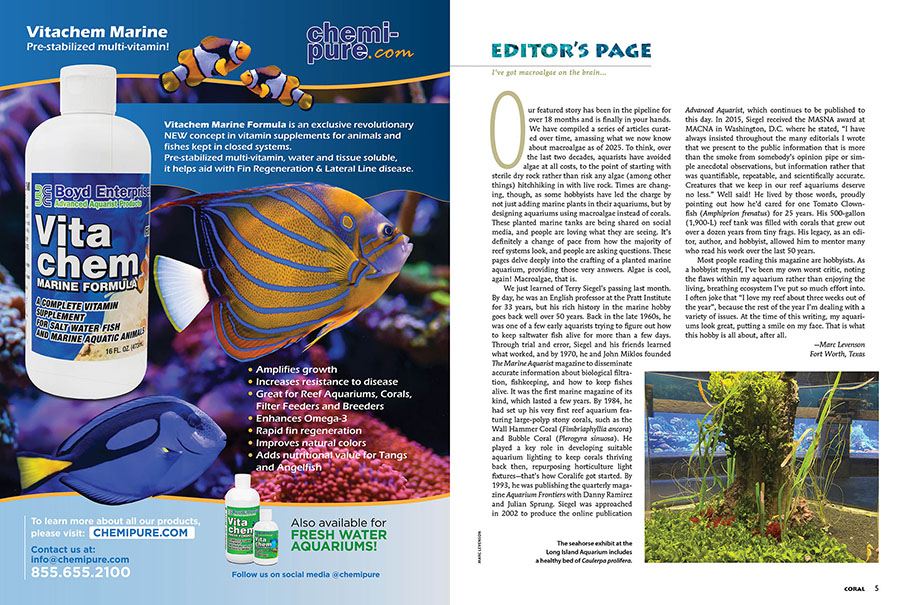
Editor’s Page
On the editorial page, Marc Levenson discusses the changing perspective of aquarists toward live rock and its companion macroalgae over the past 20 years. He shares his own aquarium experiences and also commemorates the passing of one of the hobby’s greats, Terry Siegel, who served as a professor of English at Pratt Institute for 33 years and contributed to the saltwater aquarium hobby for over 50 years.
The article also provides answers to questions I had never wondered about before, but are actually fundamental questions for an aquarist, such as, “When was the first official reef aquarium established?” Levenson has presented the reader with a narrative enriched with historical and personal perspectives.
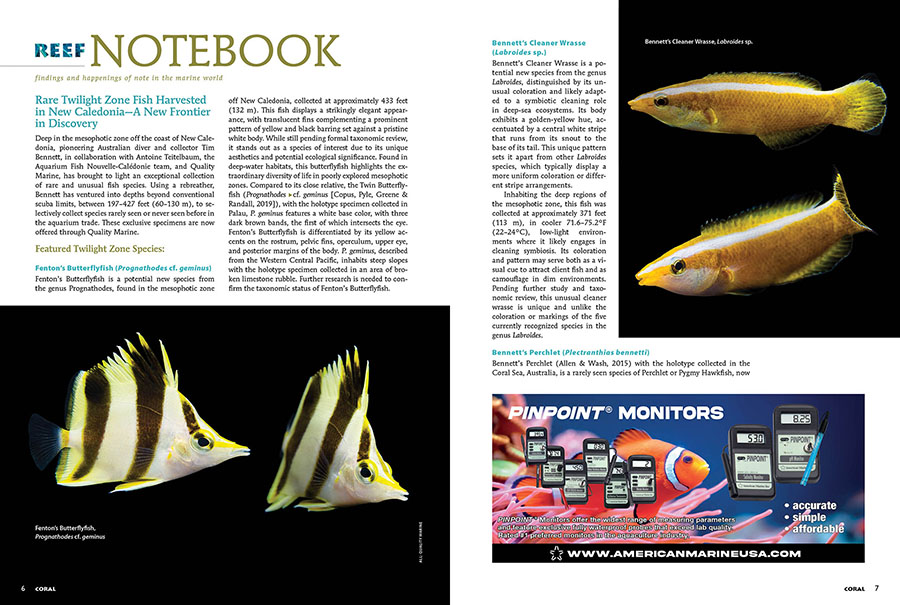
Reef Notebook
In 2023, I had the chance to observe the species Photoblepharon palpebratus, which lives at depths of 60 to 120 meters, at The State Museum of Natural History Karlsruhe. This experience took place in a dark room and a specially designed aquarium exclusively for this species.
That’s why I found the article by Kevin Kohen, Quality Marine’s marketing and brand development director, about deep dives in mesophotic areas with a rebreather device very interesting. The collaboration with Australian diver Tim Bennett, Antoine Teitelbaum and Aquarium Fish Nouvelle-Calédonie, opens the doors to extraordinary creatures such as undescribed Labroides sp. and Prognathodes sp., Plectranthias benetti, and a variant of Compsanthias ventralis.
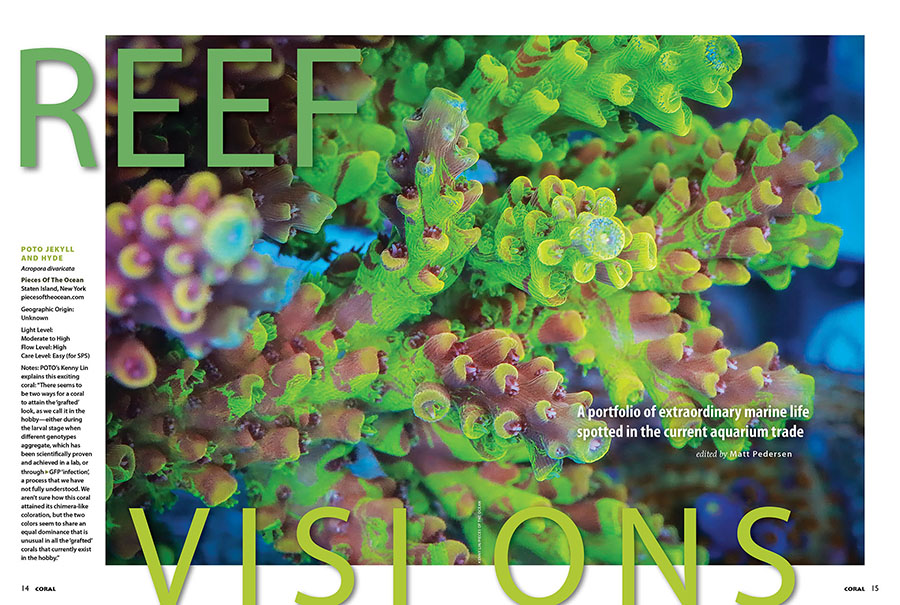
Reef Visions
In this issue, Matt Pedersen introduces some very attractive creatures that could be a good reason to start a saltwater aquarium. In his article, which also touches on the optimum living conditions of the creatures, he includes many species that look like they came out of the Avatar movie. I don’t want to share all the details here, but let me give you a little hint: Pink.
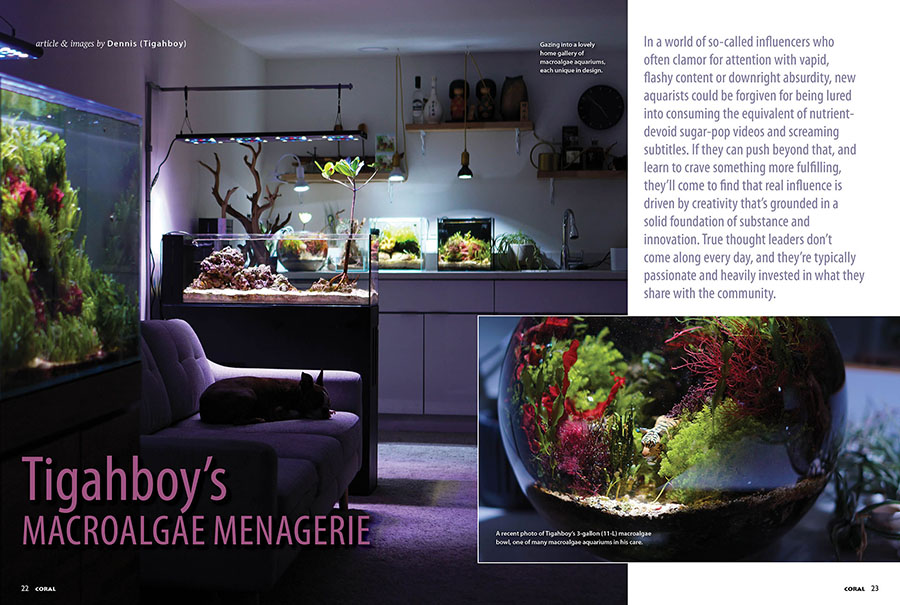
Tigahboy’s Macroalgae Menagerie
This heartfelt article written by Tigahboy (Dennis) is supported by impressive photographs he took. This article, which is simple but instructive for beginners, also offers us the opportunity to meet someone who has devoted years to this hobby.
“While we still have a long way to go in terms of really understanding the different types of macroalgae and their care needs, I am still optimistic we will get there, thanks in large part to fellow aquarists growing this subniche within the aquarium hobby and the information they have generously shared along the way.” – Dennis “Tigahboy”
Dennis’ system is not based on expensive technologies; it is based on conscious observation, regular maintenance and balanced resource management. He provides daily micro and macro element support, and performs regular pruning to prevent species such as Caulerpa from entering the “going sexual” phase. He does not neglect water changes and successfully manages crises with rapid intervention. He also argues that macroalgae should be frozen and disposed of so that they do not harm the environment.
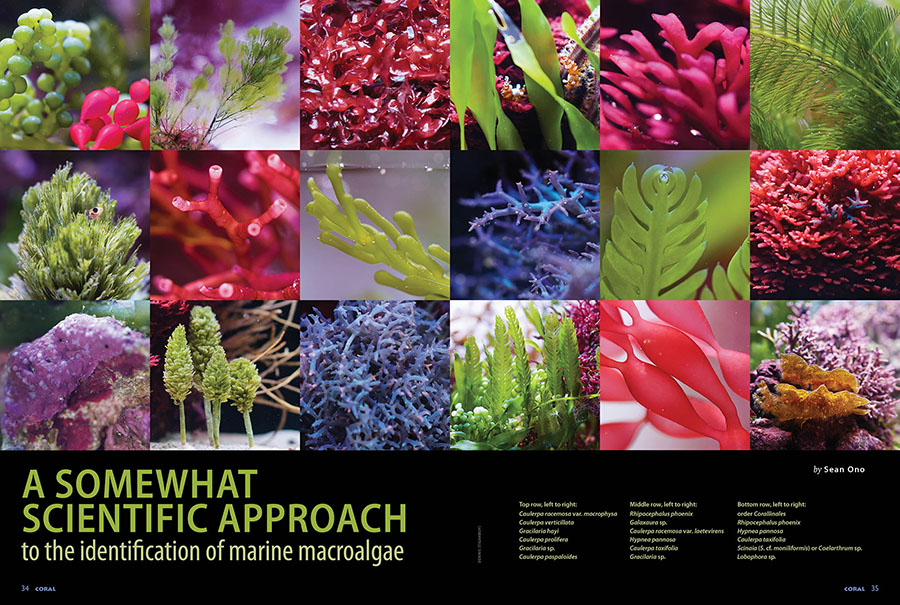
A Somewhat Scientific Approach To The Identification Of Macroalgae
Sean Ono stresses that many macroalgae species are still misidentified or incompletely identified. The different light requirements, growth patterns and chemical structures of species mean that misidentifications can lead to not only aesthetic but also ecological problems.
Ono covers various techniques for classifying macroalgae based on their morphology, color, and growth form. However, the most important point he emphasizes is that scientific resources in this field are limited and reliable information is hard to come by. Therefore, correct identification requires serious expertise.
“My best advice is to approach identification with a bit of deductive reasoning—start broad and narrow down your selection… But regardless of whether or not you are able to successfully identify macroalgae, it shouldn’t stop you from enjoying them for what they are—simply incredible organisms from our world’s oceans.” – Sean Ono
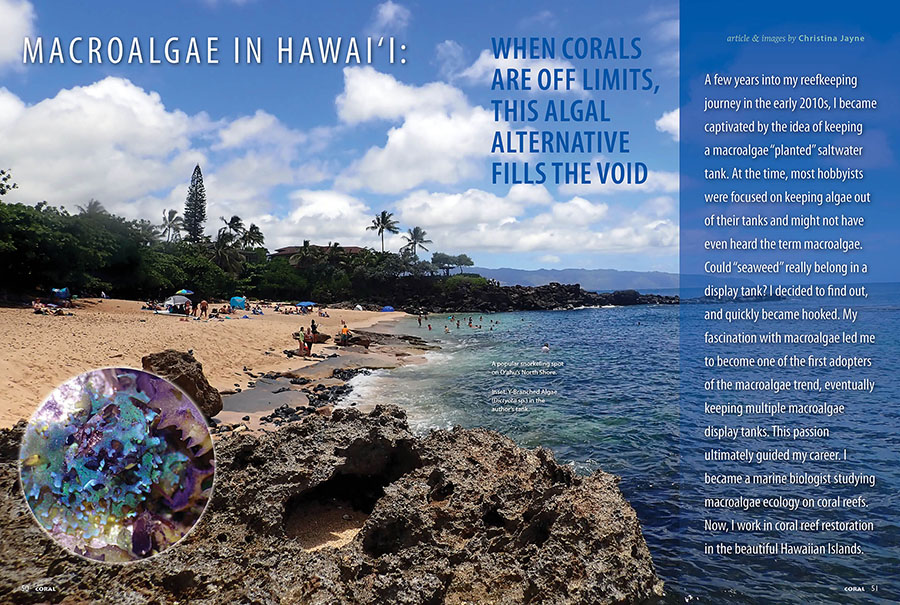
Macroalgae in Hawai’i
Marine biologist Christina Jayne describes how a personal interest that began off the coast of California led to a professional career in Hawai‘i. Her experiences in Hawai‘i’s warm waters show that macroalgae can be a sustainable and compelling alternative.
Jayne also shares practical information about observation sites, species’ geographic distributions and viewing conditions, making this a nature journal that is both a guide and an inspiration.
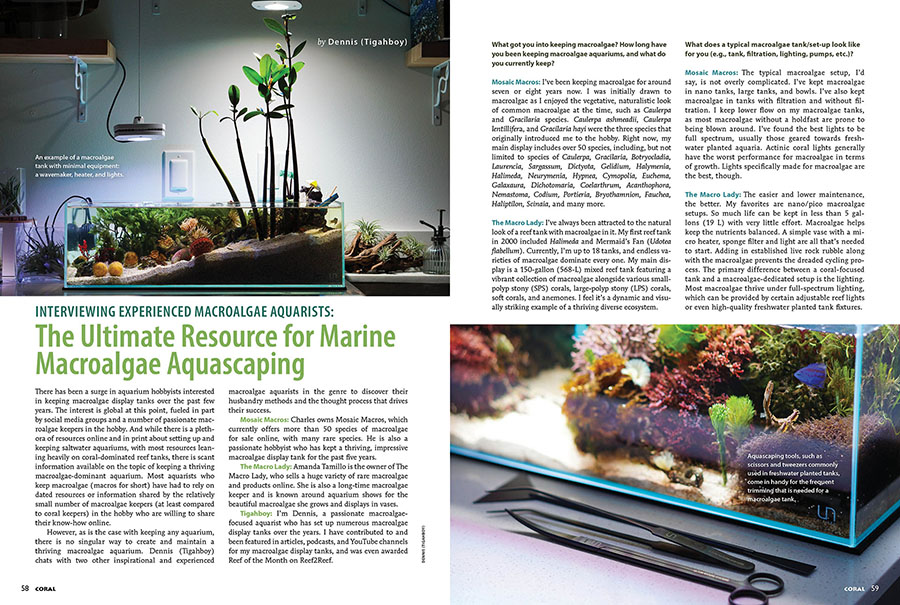
Interview with Experienced Macroalgae Aquarists
One of the most striking sections of this issue, the interview is a guide for those who want to step into the world of macroalgae. In this interview directed by Tigahboy, three experienced aquarists share their systems, experiences, and tips. Here are the three musketeers!
- Mosaic Macros – Charles has over 50 species of macroalgae for sale online. His collection includes a wide variety of mostly rare species. He also has a large macroalgae display tank.
- The Macro Lady – Amanda Tamillo, She has been breeding macroalgae for many years. She is known for the species she displays in show tanks and vases. She sells rare species and their accompanying accessories.
- Tigahboy – Dennis has built many show tanks over the years. He contributes to the hobby through podcasts, articles, and YouTube content. His detailed answers in the interview are very instructive for beginners.
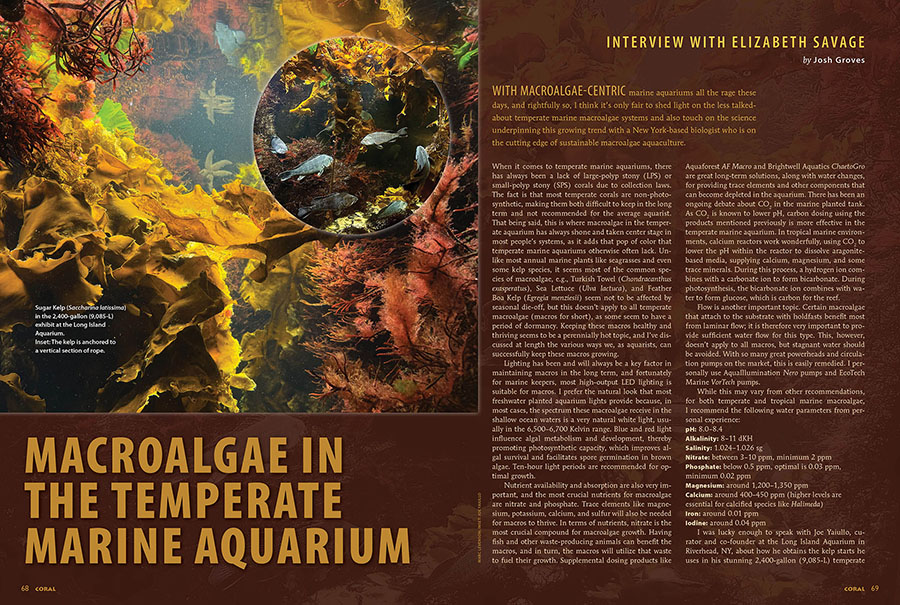
We’re Looking for Gentle Giants in Mexico!
Focusing on subtropical temperate marine systems, Josh Groves shows how macroalgae are prominent in systems where corals cannot exist due to legal restrictions.
In an interview with biologist Elizabeth Savage, Savage explains in detail the entire process of growing Saccharina latissima (Sugar Kelp). Savage’s goal is not only to contribute to the hobby, but also to reduce nitrogen pollution and improve ocean health.
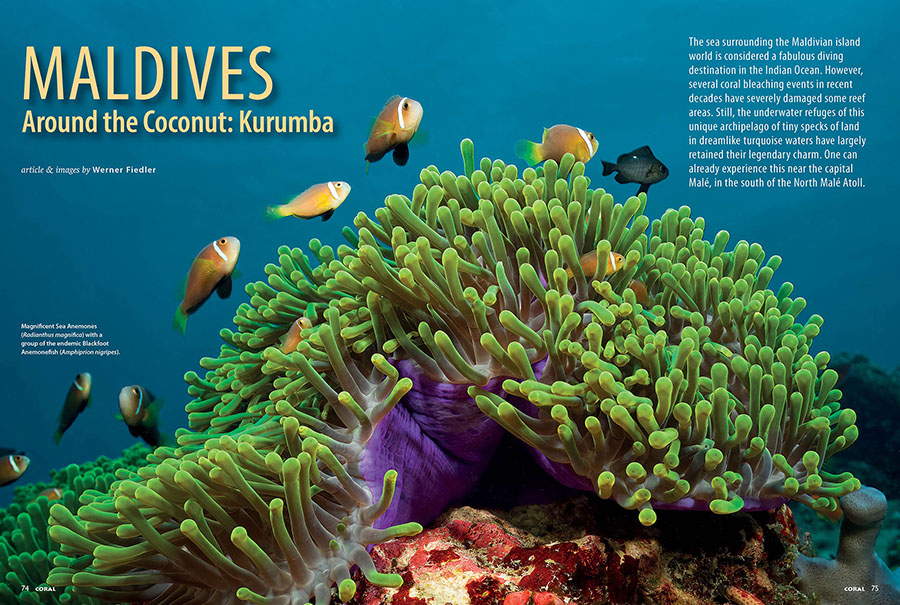
Maldives Around The Coconut: Kurumba
Kurumba Island in the Maldives is described impressively in Werner Fiedler’s travel notes. Located just 10 minutes from Male, the island was one of the first resorts to open in 1972. Today, it has become a luxurious five-star resort.
Fiedler described in detail the creatures he encountered around the island, including sea turtles, anemones, fish, and sea stars. Although he noted that the occasional sounds of planes and boats somewhat overshadowed the experience, Kurumba stands out as a special destination with its professional diving center and rich underwater life.
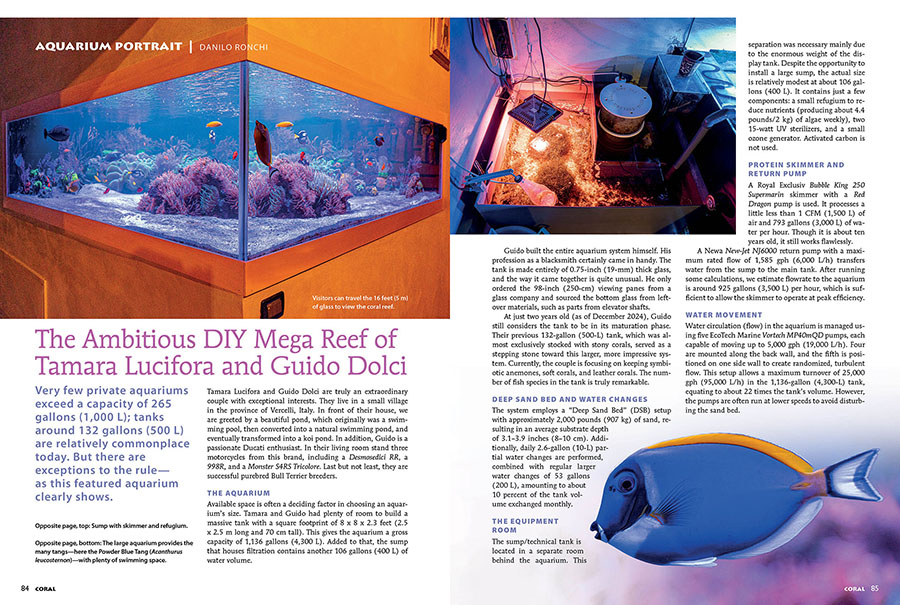
Aquarium Portrait
Get ready to encounter an impressive project where two passions come together! Tamara Lucifora and Guido Dolci, a couple living in Vercelli, Italy, share a passion for motorcycles and saltwater aquariums, just like me. While they dazzle with their Ducati Desmosedici RR, one of the few motorcycles in their living room, what really impresses is their huge 4,300 litre (1,135 gallon) home aquarium. (An aquarium any hobbyist would envy!)
In the article written by Danilo Ronchi, I must emphasize again that Guido built this system with his own hands. Designed in a square form with a base area of 2.5 x 2.5 meters and a height of 70 cm, this aquarium is a showcase of modern reef aquarism with its deep sand bed, powerful circulation system, and smart lighting. It is exciting to even imagine such a large system. However, instead of dreaming, you can read all the details about this aquarium in the July / August 2025 issue of CORAL Magazine.
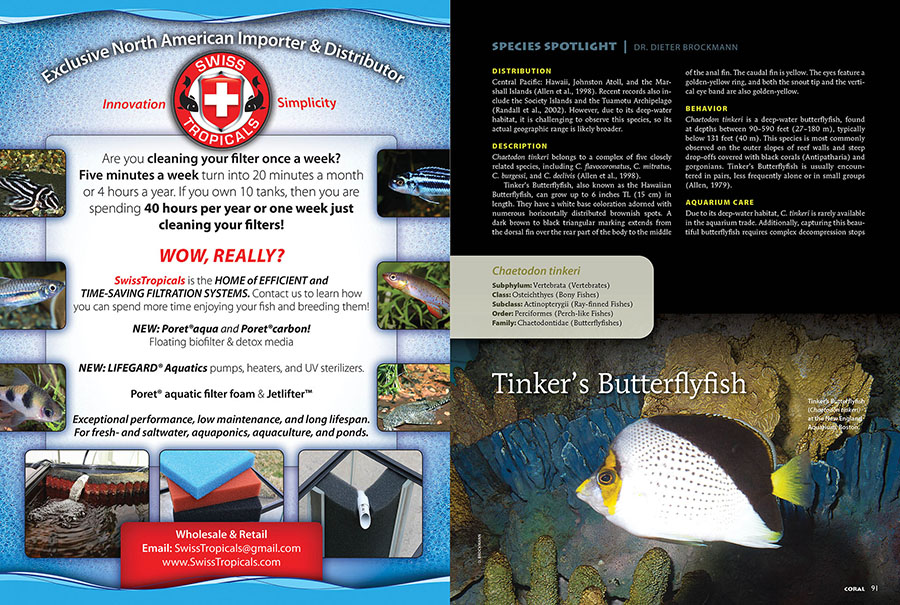
Tinker’s Butterfly, Chaetodon tinkeri, is in this issue’s SPECIES SPOTLIGHT, CORAL Magazine, July/August 2025.
Species Spotlight
Dr. Dieter Brockmann gives information about the Chaetodon tinkeri (Tinker’s Butterflyfish), a rare species that lives in the deep reefs of the Pacific. Found in Hawaii and the surrounding islands, this species is quite rare due to the depth at which it lives. He explains in detail how to keep this species healthy in large-volume aquariums.
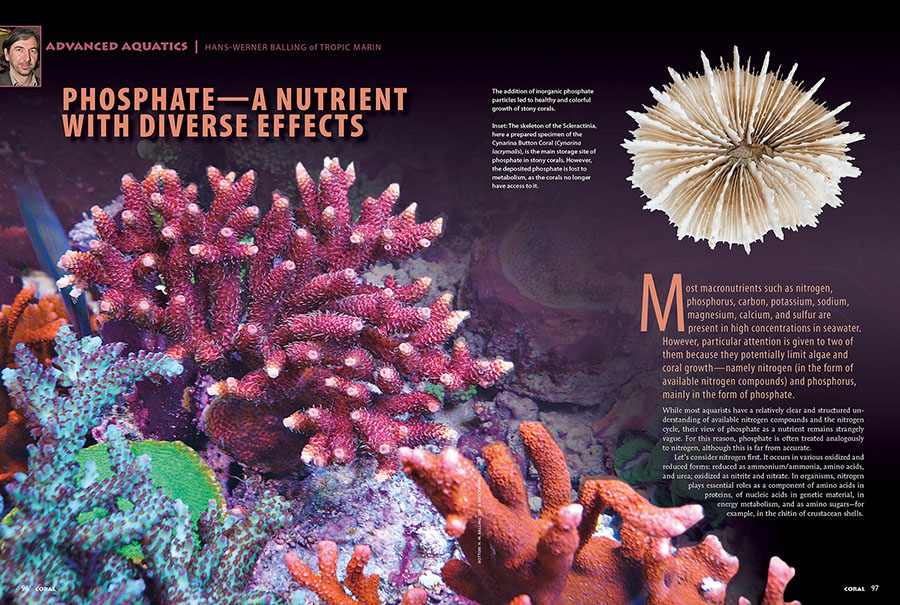
Advanced Aquatics
Dr. Hans-Werner Balling, creator of the Balling method and R&D manager of Tropic Marin, touches on a striking topic in this issue: Phosphate. Contrary to popular belief, he says that phosphate plays a vital role in the growth and skeletal formation of corals.
Balling’s research has shown that tissue loss and developmental disorders can occur, especially in SPS corals, when phosphate is deficient. Drawing attention to the fact that phosphate, which is already limited in natural reefs, can be further reduced due to phosphate absorbers used in aquariums, Balling seems to have raised the question of whether this nutrient, which must be kept at the right levels, can actually be a “friend.”
In Summary
CORAL Magazine is one of the world’s most important printed publications in the saltwater aquarium industry. If you would like to subscribe and read the full content, you can start your subscription here. We will be eagerly waiting for the next issue.
If you have read the CORAL Magazine July / August 2025 issue, please share your opinions and evaluations about this issue with us and other aquarists in the comments section below.
Editor’s Note: You can see the original Turkish-language version of Niron’s review at https://nakvaryum.com/coral-dergisi-temmuz-agustos-2025-incelemesi/


